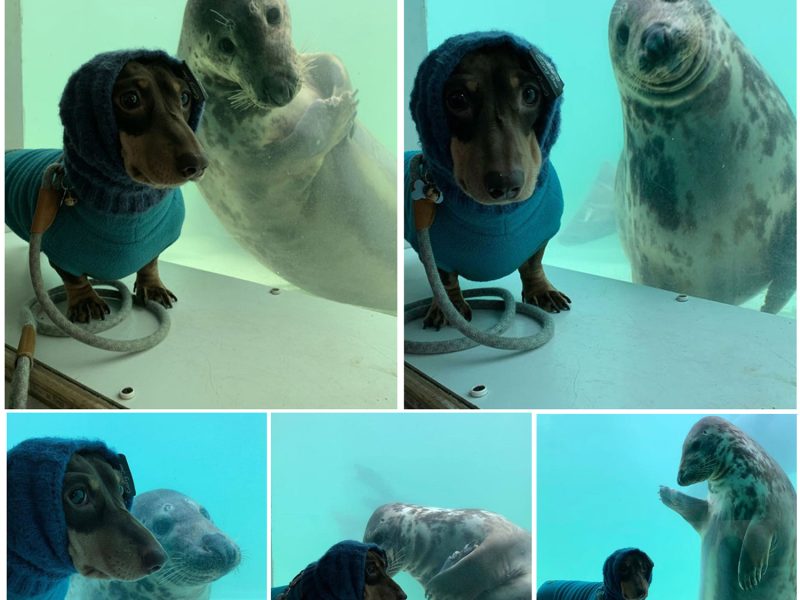Imagine walking in the forest a coming across a white wig in the middle of the road. When you touch it, however, it turns out it’s not a wig. Meet the rare and unique “hair ice”.
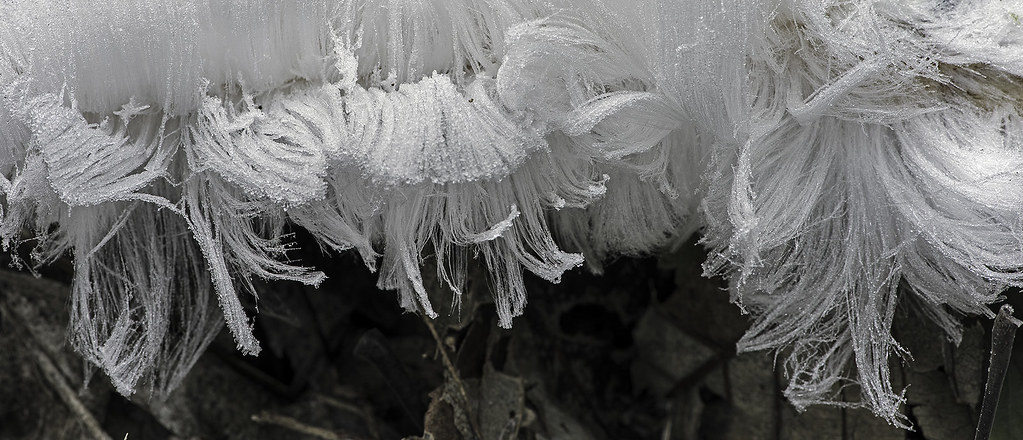
Photo: wanderflechten
Hair ice is a type of ice that forms on dead wood and takes the shape of fine, silky hair. Also known as ice wool or frost beard, this natural phenomenon is pretty uncommon, having been reported mostly at latitudes between 45 and 55 °N, in broadleaf forests.
This unique type of ice forms on moist, rotting wood from broadleaf trees when temperatures are slightly under 0 °C (32 °F) and the air is humid. The smooth, silky hairs have a diameter of about 0.02 mm (0.0008 in) and a length of up to 20 cm (8 in). Although individual hairs are brittle, they usually take the shape of curls and waves.
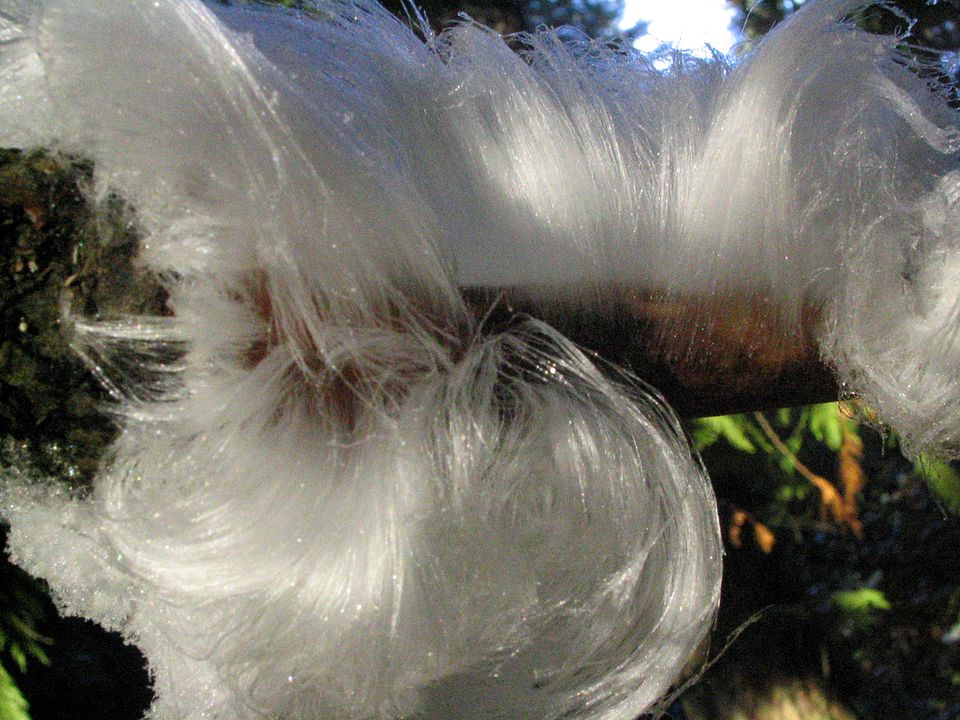
Photo: Kostian
Interestingly, they can maintain their shape for hours, and sometimes even days. This long lifetime indicates that something actually prevents the small ice crystals from recrystallizing into larger ones, as otherwise recrystallization normally occurs very quickly at temperatures near 0 °C (32 °F).
The ice hairs appear to root at the mouth of wood rays (never on the bark), and their thickness is similar to the diameter of the wood ray channels. A piece of wood that produces hair ice once, may continue to produce it over several years. But why?
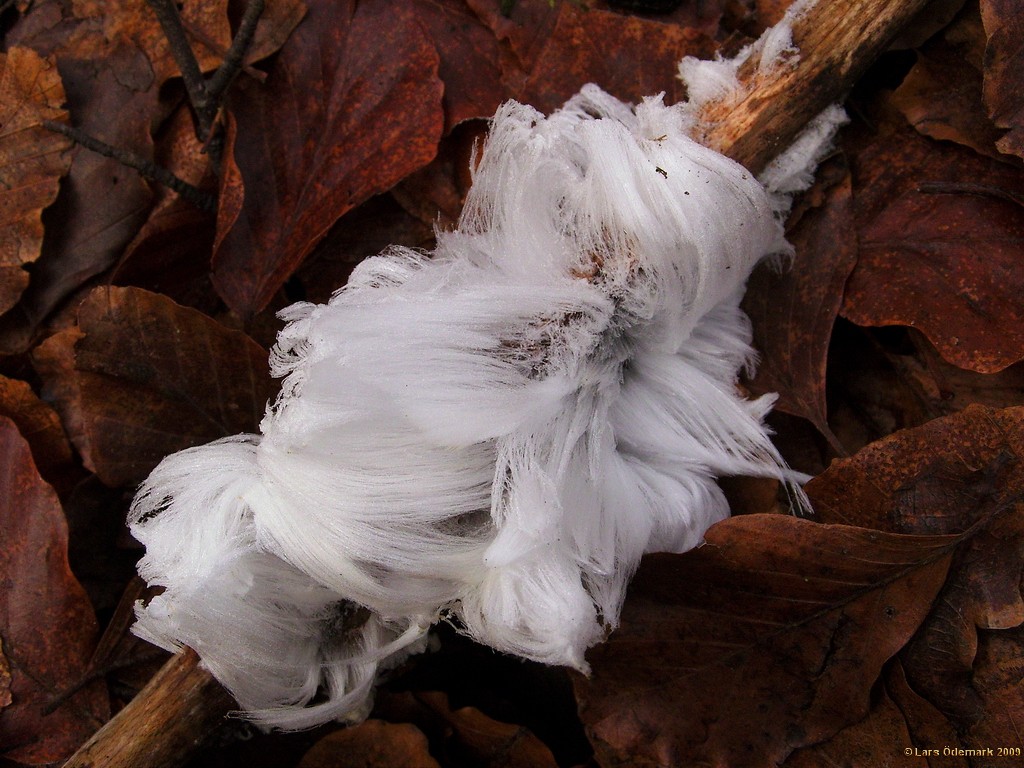
Photo: Lars Odemark
In the year 2015, German and Swiss scientists finally solved this mystery when they identified the fungus Exidiopsis effusa as key to the formation of hair ice.
The researchers found this particular fungus on every hair ice sample they examined by the researchers. When they disabled the fungus with fungicide or hot water, no hair ice formation was observed.
Apparently, the fungus shapes the ice into fine hairs through an uncertain mechanism and likely stabilizes it by providing a recrystallization inhibitor similar to antifreeze proteins.

Photo: In Memoriam: me’nthedogs
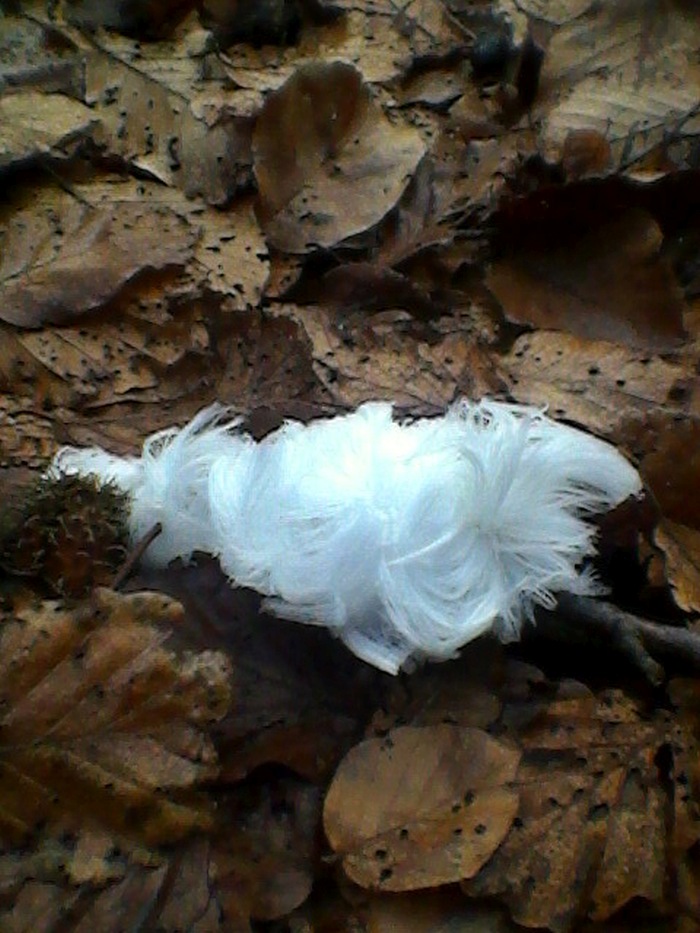
Photo: gbohne
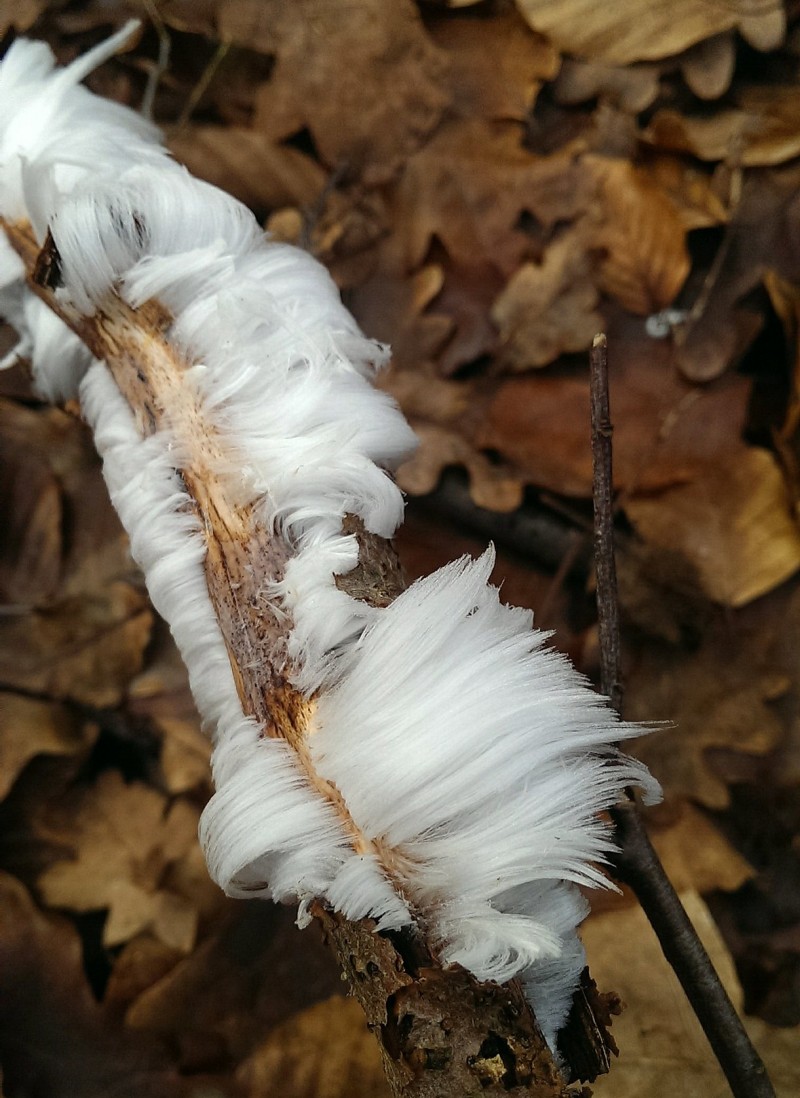
Photo: Ronaldhuizer
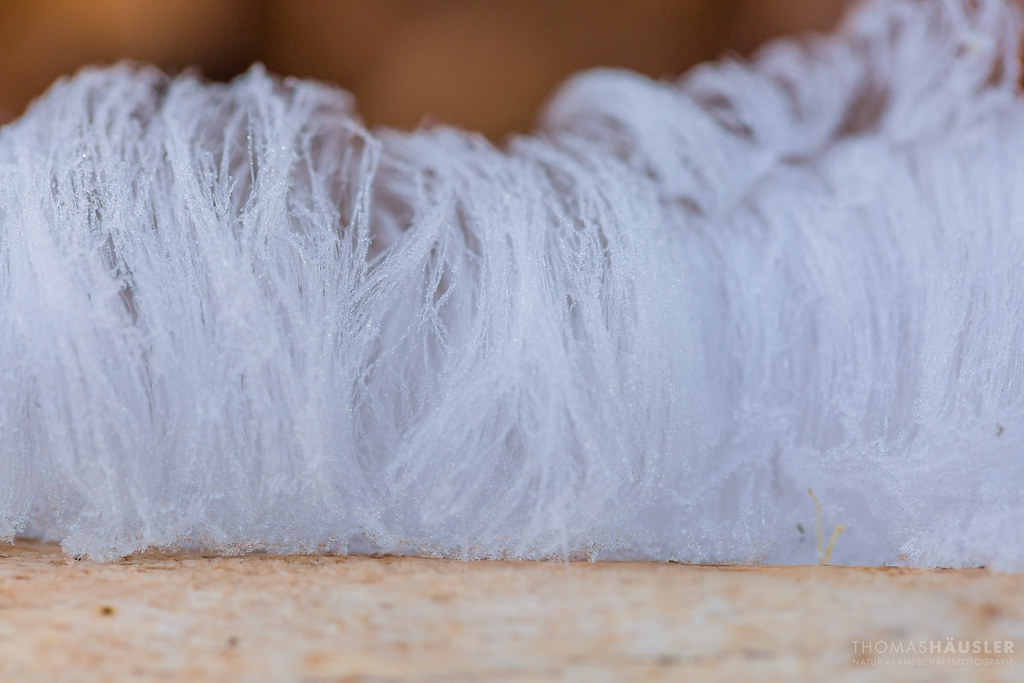
Photo: Thomas Haeusler
So if you ever happen to come across that odd white wig in the forest, please don’t touch it! It would be a petty if it lost all its hair…

